Search results for: 'For'
-
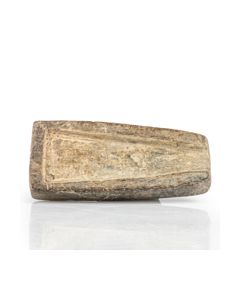 Bronze Age casting mould for a flat axe
Bronze Age casting mould for a flat axeOne half of a stone mould for bronze casting an axe head. The equipment is from a workshop of the 2nd Millennium BC, probably from the Carpathian Basin. From the famous Guttmann Collection. This mould was published in a work by Born and Hansen.
Price: on request Flint blade and stone mould
Flint blade and stone mouldInteresting group of two artefacts. A Neolithic flint blade from Egypt and a Bronze Age mould for casting or hammering metal.
Price: on request Iron spear head worth the exhibition in a museum
Iron spear head worth the exhibition in a museumVery nice patina, smooth surface, rare degree of preservation for an iron object.
Price: on request Mycenaean pottery stirrup jar
Mycenaean pottery stirrup jarCharacteristic type of vessel for the Mycenaean civilization in Bronze Age Greece. From the peak of Mycenaean pottery production in the 14th century BC.
Price: on request Group of 3 Scythian-Greek arrow heads
Group of 3 Scythian-Greek arrow headsCharacteristically shaped ancient bronze arrow heads. With three wings and barbed hooks. Perfect condition with lovely patina. Typical for the Scythians from 700 BC to hellenistic times.
Price: on request Large published cypriot krater, ex Sotheby's
Large published cypriot krater, ex Sotheby'sFully preserved piece, very rare for an object of this size. 1977 on exhibition in the Bielefeld Museum of Fine Arts. From an old German private collection, acquired 1971 at Sotheby's. Coming with an ArtLoss certificate.
Price: on request Large published cypriot jug, ex Christie's
Large published cypriot jug, ex Christie'sExcellently preserved, rare for such a large object. 1977 on exhibition in the Bielefeld Museum of Fine Arts. From an old German private collection, acquired at Christie's in the late 1960s or early 1970s. Coming with an ArtLoss certificate.
Price: on request Beaker of the Urnfield culture
Beaker of the Urnfield culturePottery vessel with fantastic decoration dating to the Urnfield period, the transition between Bronze Age and Iron Age in Central Europe. Found in Southern Germany. 1200 to 800 BC.
€600 Villanovan fibula from the Hattatt collection
Villanovan fibula from the Hattatt collectionBronze brooch of the Italic Iron Age. The piece is published in the standard work "Brooches of Antiquity".
Price: on request Italic fibula with nice incised decoration
Italic fibula with nice incised decorationLarge bronze brooch of a typical boat-shape from Iron Age Italy. A special feature and rarity are the three links of a chain still hanging on the pin.
Price: on request Villanovan fibula from the Hattatt collection
Villanovan fibula from the Hattatt collectionSerpentine bronze brooch of the Italic Iron Age. The piece is published in the standard work "Brooches of Antiquity".
Price: on request Large Villanovan fibula from the Hattatt collection
Large Villanovan fibula from the Hattatt collectionImposing bronze brooch of the Italic Iron Age. The piece is published in the standard work "Brooches of Antiquity".
Price: on request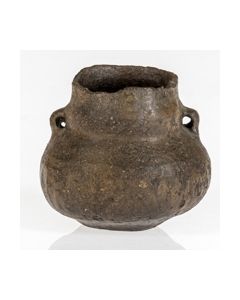 Vessel of the Urnfield culture
Vessel of the Urnfield cultureNicely preserved pottery dating to the Urnfield period, the transition between Bronze Age and Iron Age in Central Europe. Found in Southern Germany. 1200 to 800 BC.
Price: on request Bow fibula of the Urnfield culture
Bow fibula of the Urnfield cultureExcessively rare brooch type from Late Bronze Age in Bavaria. It is known from the Urnfield period hoard of Reisen near Munich in Germany. This piece has been found near Regensburg, Germany.
Price: on request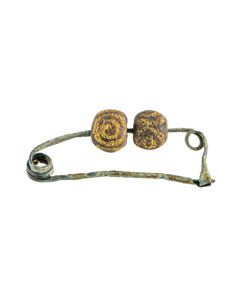 Early Italic brooch decorated with beads
Early Italic brooch decorated with beadsThere rare brooch type from northern Italy is based on predecessors from Greece. The piece is from the famous Richard Hattatt collection and is published in two of his works.
Price: on request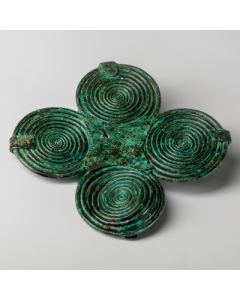 Italic quatrefoil fibula
Italic quatrefoil fibulaExtremely well preserved double spectacle brooch dating to the early Iron Age in Italy. 8th cent. BC. Acquired 1989 at Casa Serodine.
Price: on request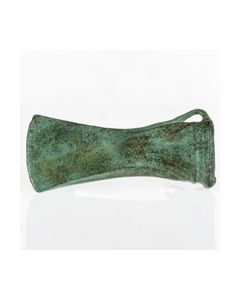 Socketed axe head from Southern Germany
Socketed axe head from Southern GermanyA typical bronze tool of the late Urnfield culture or early Hallstatt culture. It was found near Regensburg in Southern Germany by a voluntary archaeologist.
Price: on request Beaker of the Bell Beaker culture
Beaker of the Bell Beaker cultureThe voluminous body has the typical shape of vessels from the Bell Beaker culture. It has been made during the transitioning period between Stone Age and Bronze Age.
Price: on request Melon bracelet from the Hallstatt period
Melon bracelet from the Hallstatt periodThe massive bronze bracelet was found in Mintraching, Germany. The piece is published in an archeological report. Around 600 BC.
Price: on request Group of Italic brooches and artefacts
Group of Italic brooches and artefactsExciting group of 17 bronze objects. These include an Italian serpentine fibula with large disc head, three early Etruscan brooches, and a bronze sheet with a decorative head.
Price: on request Large decorated violin bow fibula
Large decorated violin bow fibulaImpressive piece of jewellery because of its size and decoration. From Central Europe, made during Late Bronze Age or Early Iron Age.
Price: on request Early Etruscan fibula
Early Etruscan fibulaThe early Etruscan bronze brooch is characterized by its artistically decorated bow. A find from northern Italy.
Price: on request Early fibula from Magna Graecia
Early fibula from Magna GraeciaGreek silver brooch and piece of jewellery from the South Italian colonies. Geometric period.
Price: on request Early Etruscan sanguisuga fibula
Early Etruscan sanguisuga fibulaThe early Etruscan bronze brooch is characterized by its artistically decorated bow. From the collection of Professor Alder-Kissling.
Price: on request

